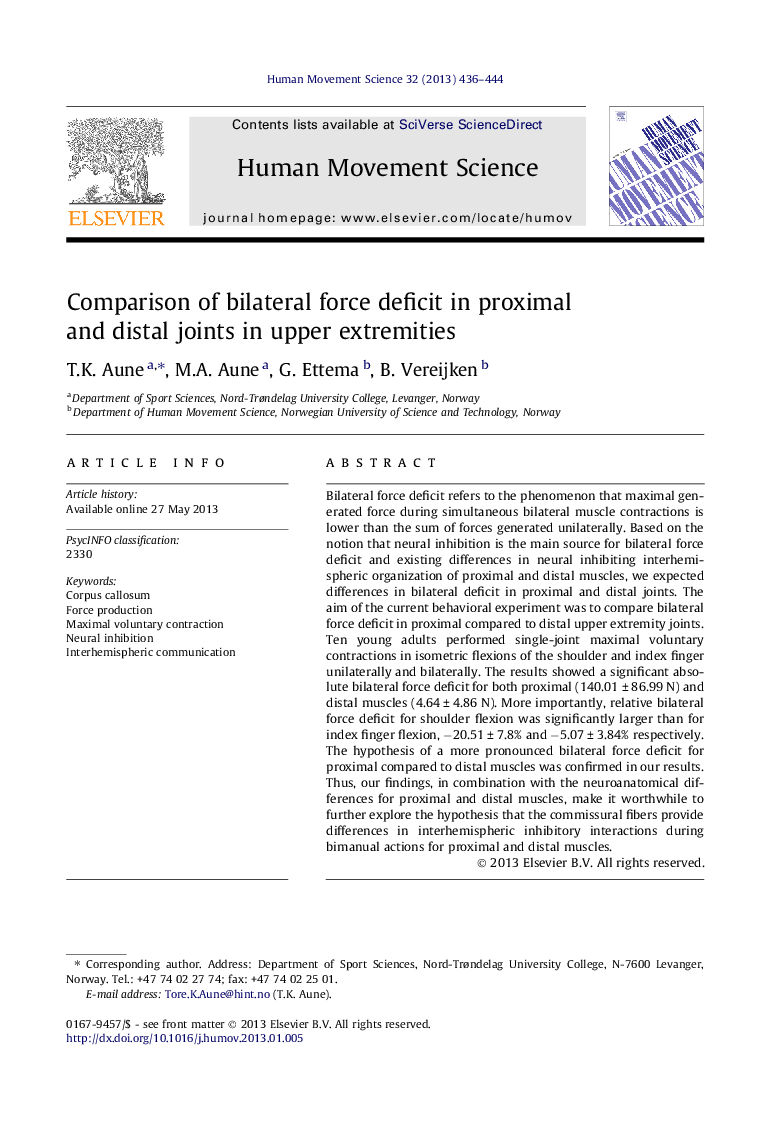| کد مقاله | کد نشریه | سال انتشار | مقاله انگلیسی | نسخه تمام متن |
|---|---|---|---|---|
| 928397 | 922363 | 2013 | 9 صفحه PDF | دانلود رایگان |

Bilateral force deficit refers to the phenomenon that maximal generated force during simultaneous bilateral muscle contractions is lower than the sum of forces generated unilaterally. Based on the notion that neural inhibition is the main source for bilateral force deficit and existing differences in neural inhibiting interhemispheric organization of proximal and distal muscles, we expected differences in bilateral deficit in proximal and distal joints. The aim of the current behavioral experiment was to compare bilateral force deficit in proximal compared to distal upper extremity joints. Ten young adults performed single-joint maximal voluntary contractions in isometric flexions of the shoulder and index finger unilaterally and bilaterally. The results showed a significant absolute bilateral force deficit for both proximal (140.01 ± 86.99 N) and distal muscles (4.64 ± 4.86 N). More importantly, relative bilateral force deficit for shoulder flexion was significantly larger than for index finger flexion, −20.51 ± 7.8% and −5.07 ± 3.84% respectively. The hypothesis of a more pronounced bilateral force deficit for proximal compared to distal muscles was confirmed in our results. Thus, our findings, in combination with the neuroanatomical differences for proximal and distal muscles, make it worthwhile to further explore the hypothesis that the commissural fibers provide differences in interhemispheric inhibitory interactions during bimanual actions for proximal and distal muscles.
► Neural inhibition is expected to be the main source for bilateral force deficit.
► There are differences in neural communication of proximal and distal muscles.
► We expected differences in bilateral force deficit in proximal and distal joints.
► Bilateral force deficit was higher for shoulder compared to index finger.
► Bilateral deficit might originate in inhibiting interhemispheric communication.
Journal: Human Movement Science - Volume 32, Issue 3, June 2013, Pages 436–444